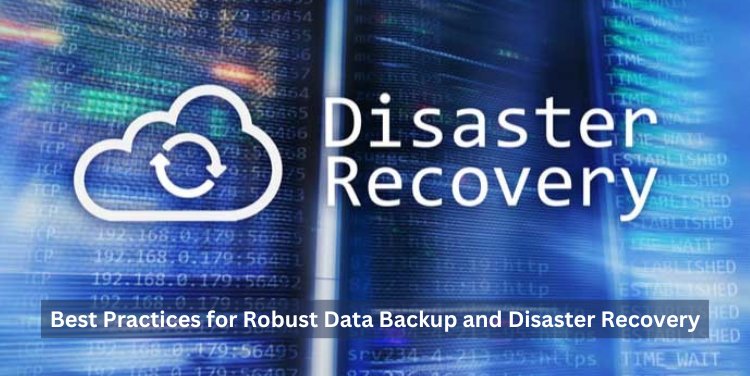Best Practices for Robust Data Backup and Disaster Recovery

In the rapidly evolving landscape of information technology, safeguarding critical data has become a paramount concern for organizations. Implementing robust data backup and disaster recovery (BDR) strategies is imperative to ensure business continuity and mitigate the risks associated with unforeseen events. This blog delves into the best practices that organizations should adopt to establish a resilient BDR framework.
-
Comprehensive Risk Assessment: Before crafting a BDR plan, conduct a thorough risk assessment to identify potential threats and vulnerabilities. Evaluate the impact of various scenarios, including natural disasters, cyberattacks, hardware failures, and human errors. This initial analysis forms the foundation for developing a targeted and effective BDR strategy.
-
Regular Data Audits: Perform regular audits of your data to categorize information based on criticality. This classification will guide the prioritization of backup processes and resource allocation. Not all data is of equal importance, and understanding its value enables organizations to allocate resources judiciously.
-
Automated Backup Procedures: Implement automated backup procedures to ensure the consistency and timeliness of data backups. Automated systems reduce the likelihood of human error and ensure that backups occur at predetermined intervals. Regularly test the restoration process to confirm the reliability of backups.
-
Offsite Data Storage: Store backup data at geographically distant offsite locations to mitigate risks associated with localized disasters. Cloud-based storage solutions offer scalability, accessibility, and redundancy. Distributing data across multiple locations enhances its security and availability during disruptive events.
-
Encryption and Security Measures: Prioritize data security by employing encryption measures for both data in transit and at rest. Secure communication channels and encryption protocols safeguard sensitive information from unauthorized access. Regularly update security measures to stay ahead of evolving threats.
-
Employee Training and Awareness: Human error remains a significant factor in data loss. Conduct regular training sessions to educate employees on the importance of data security, the role they play in safeguarding information, and the procedures to follow during and after a disaster. An informed workforce is a crucial component of a resilient BDR strategy.
-
Regular Testing and Simulations: Test the BDR plan through regular simulations to identify potential weaknesses and improve response times. Realistic scenarios can reveal unforeseen challenges and enable organizations to refine their procedures. Regularly update the BDR plan based on lessons learned from testing.
-
Collaboration with Stakeholders: Establish clear lines of communication and collaboration with key stakeholders, including IT teams, management, and external service providers. Define roles and responsibilities to streamline the response to a disaster. A well-coordinated effort is essential for swift and effective recovery.
-
Documentation and Documentation Review: Maintain comprehensive documentation of the BDR plan, including procedures, contact information, and system configurations. Regularly review and update this documentation to ensure its accuracy and relevance. Documentation serves as a crucial reference during high-stress situations.
-
Regulatory Compliance: Stay abreast of industry-specific regulations and compliance requirements related to data protection. Ensure that your BDR plan aligns with these standards to avoid legal ramifications and financial penalties.
A robust data backup and disaster recovery strategy is an indispensable element of modern business resilience. By incorporating these best practices, organizations can fortify their ability to withstand and recover from disruptions, safeguarding critical data and ensuring continuity in the face of unforeseen events.
What's Your Reaction?















